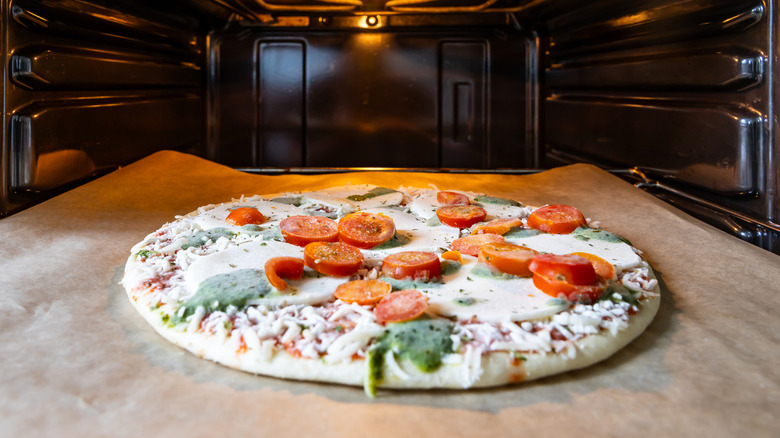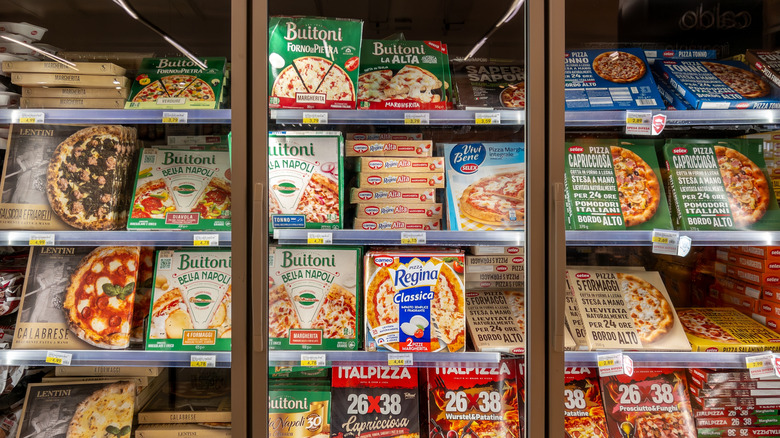Are Frozen Pizzas Pre-Cooked Or Raw?
Few convenient meals top the delights of a frozen pizza. Simply preheat your oven, pop in the pie, remain patient (the hardest part), and a tasty dinner emerges. Nowadays, the food is understandably easy to take for granted, but ever since the mysterious origins of the first frozen pizza, lots of innovation has poured into its creation. So while considering the behind-the-scenes of the dish, you may wonder: Are frozen pizzas pre-cooked or raw?
Well, it's a nuanced question, with different techniques per manufacturer. Generally, though, frozen pies come with most elements partially cooked. The most common build involves a pre-baked dough and slightly cooked-through toppings, while the cheese and tomato sauce have yet to be fully heated. You can even make out such characteristics visually: The cheese is still separated in distinct strands, vegetables like bell peppers look crisp or at least blanched, and meats don't look raw but lack any browning.
As for the dough, frozen pizza typically employs a par-baked crust. Manufacturers want you to enjoy a delicious pie without a long cooking time and high oven temperature. So a preliminary bake eases preparation while also forming a rigid structure fit for transportation. That way, a range of home kitchens can still achieve the mouth-watering browned look.
Most frozen pizza brands come partially cooked
Ever since frozen pizza first appeared on grocery store shelves in the 1950s, the involved technology has kept evolving. Advances like flash freezing, infusing the dough with rising agents, and vacuum packaging all altered the format in which frozen pies arrived on grocery shelves. To protect the lucrative industry, brands typically don't disclose the details behind production, thereby leaving the specifics of frozen pies to speculation. After all, the manufacturing quality separates the best from the worst-ranked frozen pizzas.
In terms of the consumer experience, the doneness of the pizza boils down to two crucial reasons: food safety and preparation. Most importantly, don't cook it for less than the manufacturer instructions suggest, and assume ingredients are raw — no need to risk adverse health effects. Sure, that piece of pepperoni is cured and the sausage doesn't look rare — making an early bite tempting — yet such uncooked components aren't safe to eat.
Nevertheless, the pie's condition out of the box can influence the preparation technique. Pizza tastes better when cooked at higher temperatures, so consider the packaged style to enhance flavors. With the common thin-crust or flatbread style, amp up the oven, optionally throw it onto a pizza stone, and enjoy a delectable pie. However, with a deep-dish or rising-crust style, it's best to avoid tinkering with the formula — frozen elements are chemically considered. After all, if you have the absolute best frozen pizza brand on hand, why mess with the template?


